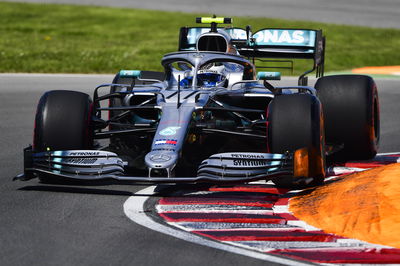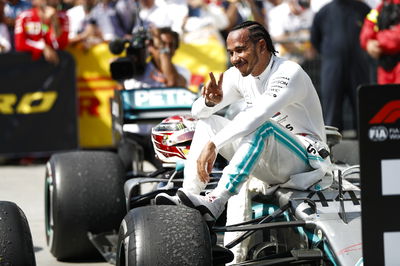Mercedes performances not down to thinner F1 tyres – Bottas
Valtteri Bottas reckons a combination of mechanical and aerodynamic improvements - not Pirelli’s thinner-tread tyres - has been key to Mercedes’ emphatic start to the 2019 Formula 1 season.
Mercedes has notched up seven straight victories and five one-two finishes in a dominant start to the campaign, prompting rivals Ferrari and Red Bull to suggest that Pirelli’s introduction of tyres with a 0.4mm thinner tread has favoured the reigning world champions this year.

Valtteri Bottas reckons a combination of mechanical and aerodynamic improvements - not Pirelli’s thinner-tread tyres - has been key to Mercedes’ emphatic start to the 2019 Formula 1 season.
Mercedes has notched up seven straight victories and five one-two finishes in a dominant start to the campaign, prompting rivals Ferrari and Red Bull to suggest that Pirelli’s introduction of tyres with a 0.4mm thinner tread has favoured the reigning world champions this year.
But speaking during the Canadian Grand Prix weekend, Bottas dismissed such a notion, and instead pointed towards Mercedes’ improvements in slow-speed corners as having a bigger influence on the team’s performances.
“It’s quite difficult to say if it’s up to the tyres,” Bottas said during the Canadian Grand Prix weekend.
“We always still feel after each race that there is still something better we could have done with the tyres, even though most of the races we have been able to make the most out of them.
“To get the tyres perfect in qualifying and the race is extremely difficult still. So I wouldn’t just put it down to tyres, the car itself, the suspension, is a little bit better as well in slow speed.”
Mercedes relied on supreme engine performance during the early days of its success in the V6 hybrid era, but years of stable power unit regulations have enabled Ferrari to close the gap and overtake the German manufacturer in terms of top speed.
A shift in car design and development philosophy over the winter has resulted in Mercedes’ latest challenger - the W10 - setting the benchmark for downforce and drag, with the team focusing its attentions on addressing the deficiencies of its previous cars.
“It feels like it rotates well - there’s not much more than that,” Bottas explained. “It is clearly a big improvement on last year or the year before, where we definitely saw that in some of the slow speed corners we were not the best but now we’ve made huge steps.
“Definitely the front-end of the car is much better on entry, mid-corner phase, which then means you can brake a little bit letter and rely on the front to get the car turned and positioned well for the exit.
“Compared to last year the car is feeling much more like it’s actually going where you want it to go. That’s obviously a good feeling. It’s one of the improvements, but I can’t say there’s just one big thing compared to last year’s car. I think it’s everything overall.
“That’s one part of it, how it feels mechanically, but I would still say that in this car the aerodynamics are the bigger part, because you can see we’re still a little bit slow on the straights compared to Ferrari, but we’ve been quicker than them in all the corners and that’s down to having more downforce.
“I would say that’s the biggest improvement from last year.”












